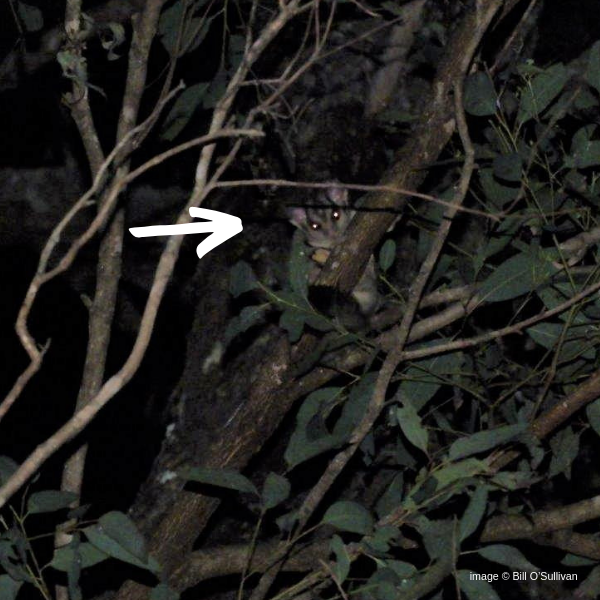5 May 2019
Because of you, our generous members and supporters, our #GLIDESURVIVETHRIVE effort was a success! Thanks to you, we raised $5,000.
We are extremely grateful for the support of all those who chose to give to this important appeal, which included generous donations from the Lamington Natural History Association and 116 offline and online supporters.
Your gift goes directly towards helping restore squirrel glider habitat and connecting isolated glider populations in the Scenic Rim.
Thanks to you, squirrel gliders like this beautiful little fluffball (pictured below), who was captured by a motion-sensing camera at lower Duck Creek, Kerry Valley in the Scenic Rim, will survive and thrive.
Unlike the other glider species in the Scenic Rim, the squirrel glider prefers low-altitude, relatively dry open forests, and these are not safeguarded by protected areas nearly as much as the tall moist eucalyptus forests and rainforests of the mountains, said Wildlife Queensland Scenic Rim Branch President Ronda Green.

“Although some populations occur at the edges of national parks or on council land, much of their range is on private land, including much of the central areas of the Scenic Rim, and for genetic diversity to occur well into the future (to avoid the deleterious effects of inbreeding), and to ensure movement pathways for escape during fires or prolonged droughts or when food is low for any reason, it will be essential to have these connections, by preserving what is already there, enhancing poor habitat by providing nest boxes and food trees, and revegetating some sites or at least providing glider poles for them to move between otherwise isolated habitat fragments,” said Ronda.
“It is a shame to lose any species, and this is a particularly delightful one, so much so that I bestowed the third name Petauri (after the genus Petaurus) on my daughter at birth,” Ronda said.
Next steps
In partnership with the Scenic Rim Council, Wildlife Queensland Scenic Rim Branch is plotting a definite route for the habitat corridor. This will be based in part on the surveys we’ve already conducted and on further detailed research which includes:
- some more intensive searches (by spotlighting and motion-sensing camera) for where the gliders currently are
- identifying all gaps that need joining
- what parcels of land are possible for placement of corridor elements (on roadside land, council land, or land belonging to landowners sympathetic to wildlife)
- whether actual planting is feasible or where glider poles may be needed.
We will also further assess habitat features such as large trees with hollows and food trees (for nectar or sap) in the habitat fragments along the way, to see what enhancement may be needed (nest boxes, food plants).
We will keep all our valued supporters updated on progress.
Call for volunteers … coming soon!
In the next month, we will be making a call for volunteers to:
- help with tree- and shrub- planting and aftercare until well-established
- survey where the gliders are and what species of plants they are already using in the district (especially for sap) so we know what is most appropriate to plant for habitat enhancement in some of the fragments.
Stay tuned for more details, coming soon.
